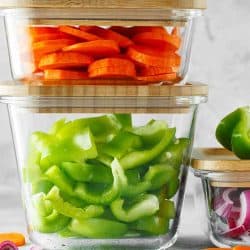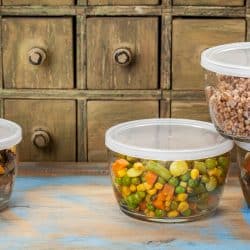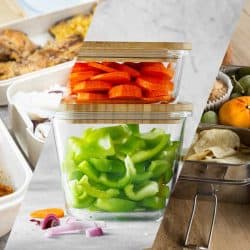Of all the tricks to prolong the shelf life of honey, a well-suited container does the job best. After all, if provided with an ideal environment, all forms of food last longer. And with honey's already indefinite life expectancy, the flavor only gets better with appropriate storage methods. Let us look at how different material options fare in this regard to find out which container is the best for storing honey.
The best container to store honey is either the one it is originally stored in or a sturdy glass container. Glass is considered the ideal storing material due to its unreactive nature. It allows no contamination of chemicals and provides airtight space to store honey for months or even years.
However, is a glass container the only appropriate option for storing honey? What about the many different materials and kinds of jars available in the market? To find answers to that and bonus tips on efficient storage, keep reading our in-depth guide for honey storage.

How Do You Store Fresh Honey Long-Term?
With the appropriate container at hand, you can store fresh honey for long-term purposes by providing it at the right temperature. Although honey practically doesn't go bad, it does lose its distinct flavor and consistency in poor environmental conditions.
The temperature requirements for storing honey containers are pretty straightforward. Don't take the extra mile to make it cooler or hotter. Keeping it at room temperature is sufficient.
As per the National Honey Board, 64-75 degrees Fahrenheit is the ideal temperature range for processed honey. For fresh, unprocessed versions, anything below 50 degrees Fahrenheit is suitable.
What Is the Best Way To Store Honey?
The best way for honey storage is to let it remain in its original container. This container likely complies with all the precise needs of the honey, thus making it the ideal choice. However, if you must switch, let's go over the following considerations to help you choose the best material.
Glass Containers
For prolonged shelf-life and stability, glass is the ideal material for honey containers. It doesn't leach chemicals, can't rust, and provides practical storage. There is the danger of breakage with glass. But, you can avoid this situation easily by handling it with care. All in all, a glass container is a beneficial and trouble-free solution for honey storage.

Plastic Containers
For short-term storage of honey, plastic containers do not pose any harmful threats. However, when browsing for long-term options, it has its pros and cons. Remember that if your honey originally came in a plastic container, it is best to let it be.
The distaste with plastic began when research studies proved its harmful impact on food exposed to it. Chemicals in plastic containers may leach out and contaminate the items stored in them. The said chemicals are liable to cause a range of metabolic disorders and fertility issues.
With honey, in particular, the leaching may also cause it to lose its water content. By doing so, the plastic essentially damages the flavor, texture and shortens its shelf-life.
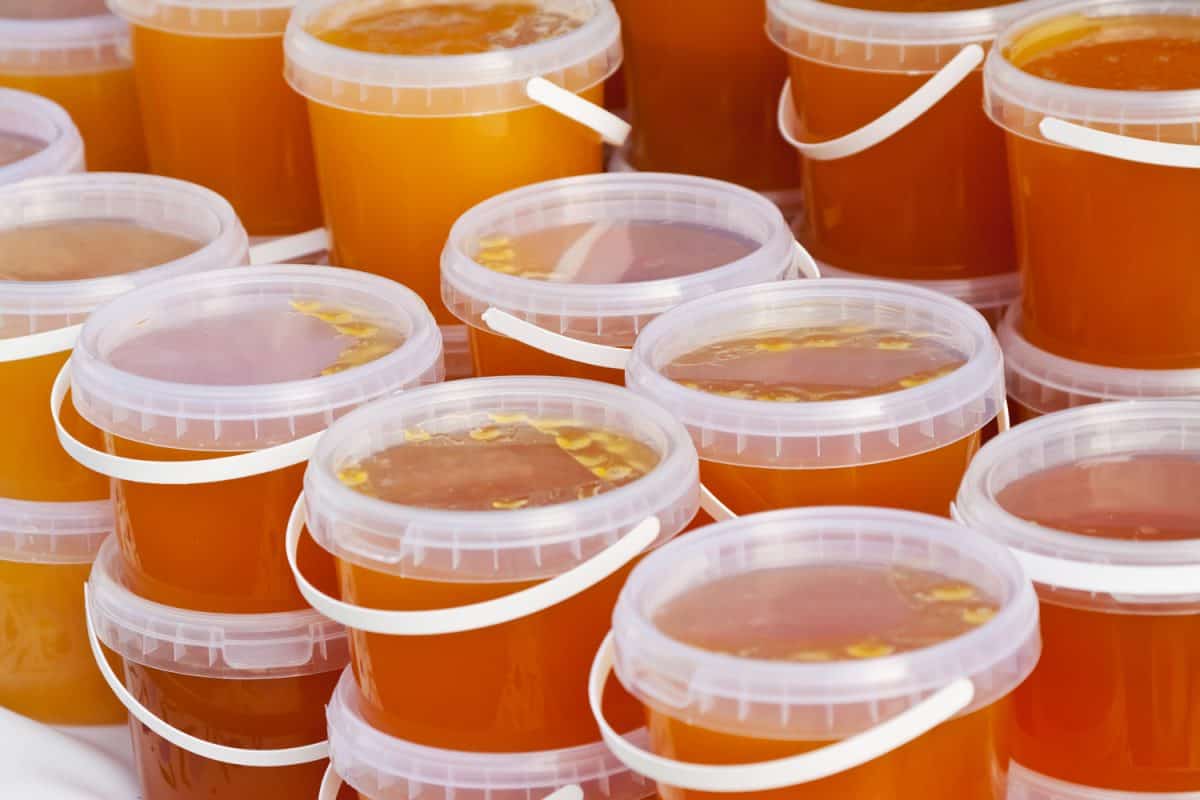
Food-safe Plastics
The many benefits of a plastic container, including its practicality and shatterproof structure, are undeniable. Thus, you may still stick to plastic for storing honey but with a few considerations.
Food-grade plastics are, essentially, kinds of plastic tested and approved for contact with food and beverages. To benefit from plastic's versatility, you must first thoroughly research and understand the drawbacks of different types.
To store honey, consider the following options:
- PET (polyethylene terephthalate) is a standard plastic used in this regard. However, they are liable to degrade over time which is dangerous for preserving honey's distinct flavor.
- BPA-free plastics are perhaps the most readily available option that is also regarded as safe by FDA. They still pose many health threats and should not be the first choice for long-term storage.
- HDPE plastic containers are your best choice. They are strong, durable, and have minimal potential to permit leeching. Top-grade HDPE containers can easily be bought to be used for long-term storage.
Click here to view a top-grade HDPE plastic container on Amazon.
How Long Can You Keep Honey in a Plastic Container?
If you are using food-safe plastic, the storage time can easily stretch to two years or the total shelf-life of the honey. For standard plastic containers, let the honey remain inside for only a couple of days. Either finish it up quickly or shift it to a better material choice during that period.
Metal Containers
Possibly the worst choice you can make for storing honey is a metal container. Honey is an acidic substance containing a range of organic and amino acids. Remember what we learned back in high-school chemistry about acids? They readily react with metals producing new substances.
The acidity of the honey is likely to trigger the oxidation of metal containers. As a result, numerous heavy metals will dissolve into it. This will only affect its flavor and lifespan but also influence the nutritional content of the honey. Consumption of such contaminated honey could lead to many gastrointestinal disorders, including food poisoning.
Can Honey Be Stored in a Steel Container?
Yes, you can store honey in a steel container, but only if it is a stainless version. Stainless steel is highly resistant to corrosion and will not contaminate the food stored.
Is It Better To Store Honey in Glass or Plastic?
Due to the general reliability of glass containers, it is better to store honey in glass rather than plastic. However, if you would not prefer the fragile nature of it, you can opt for plastic. To do so, you must verify the safety guidelines of the plastic chosen and be very careful with the duration you use it for.
Can You Store Honey in Mason Jars?
The key to efficiently storing honey is to prevent water loss or contamination. You can achieve this the best with an airtight container, and mason jars are the perfect candidate. Not only are they made of glass, the ideal material, but they also have tightly sealed lids and are even appealing to the eye.
To store honey in a mason jar, make sure you first sterilize the jar. This step is essential to ensure that any temperature differences between it and the honey don't cause the glass to break. After a boiling water bath, you want both the jar and the honey to reach room temperature before beginning storage.
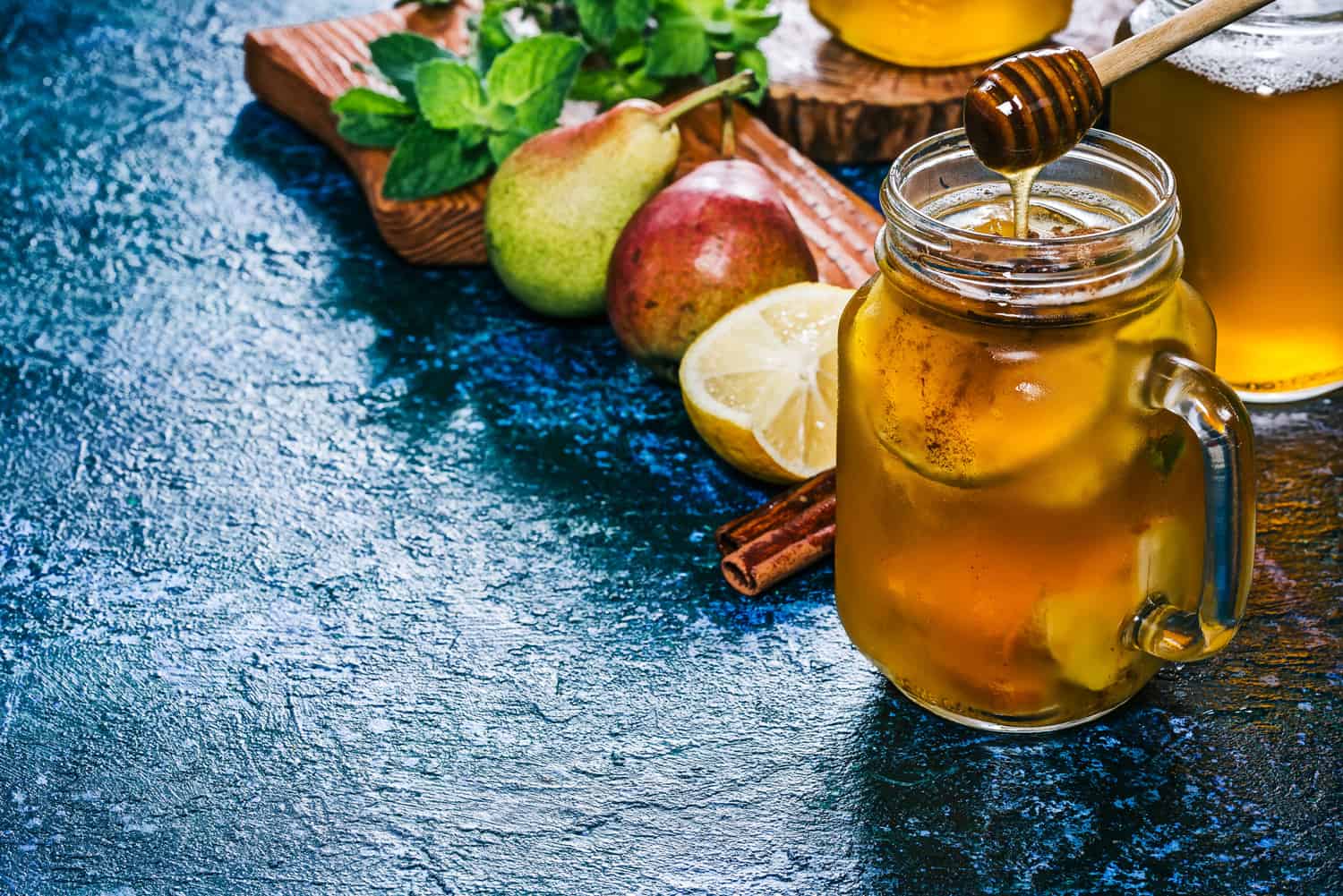
Are Honey Pots Good for Storing Honey?
Honey pots are great options for storing honey, as long as they are made of the right kind of material. Glass, plastic, and stoneware variations of the honey pot are food-safe structures, ideal for storing honey. There are lots of options on the market, so you can definitely find one that you like.
Check out this Le Creuset honey pot on Amazon.
Does Refrigeration Prolong the Shelf Life of Honey?
Refrigerating honey is not the best way to go if you're looking to protect the raw, fresh nature of it. A few hours in the fridge may not do much harm, but extending this time would cause the honey to solidify.
Now, instinctively you'll look towards reheating the container each time, causing the temperature extremes to produce moisture. Second, we must keep honey away from heat. Thus, you must only refrigerate it if you have the patience to wait for it to liquefy.
Helpful Tips
Apart from the right choice of container and suitable temperature, there is still a lot to consider when storing honey. Its aroma and flavor, being so distinct, are hard to preserve. Thus, be mindful of the following tips when doing so:
- To avoid cross-contamination, make sure you use a clean, dry spoon to scoop honey out of its container.
- Ensure that the honey jar/container has a tight seal to avoid absorbing any moisture from the air around.
- You would want to place the container in an isolated part of the pantry. The absence of light would help the honey maintain its consistency undisrupted and carry that distinct flavor even years after.
- Storing honey below the advised temperature range will cause it to crystallize. Remember that you do not have to throw it out and easily decrystallize it by soaking it in a warm water bath.
- Never use the microwave for decrystallizing honey. Microwaves get too hot, too quick. Such a temperature fluctuation would be counterproductive for regaining its consistency.
The Bottom Line
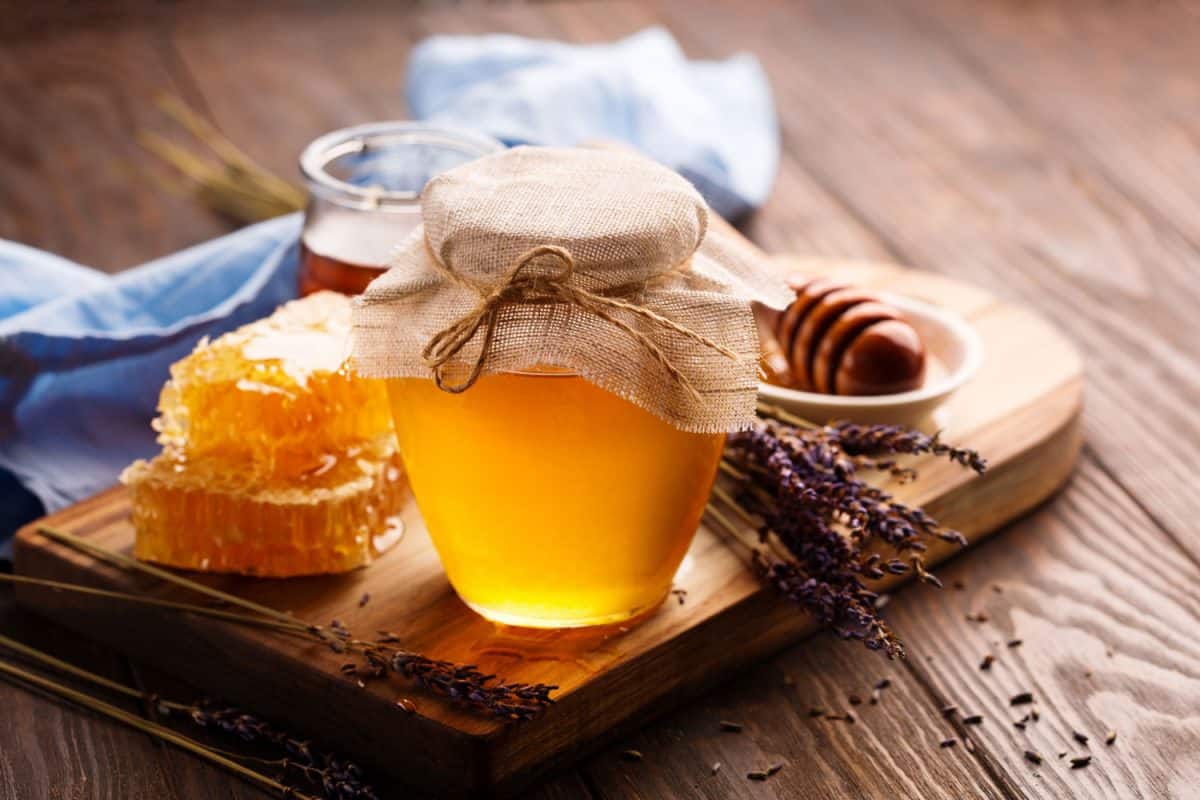
Your container of choice does not influence if the honey goes bad necessarily. However, what it does influence, is the flavor and quality of it throughout its shelf life. So, if you don't plan on using the honey right away, it's a crucial decision to ensure it retains its flavor for the long run. We hope you found the information above helpful!
Before you go, do you have other questions regarding containers? Did you ever consider storing milk in something other than a jug or carton? We go over the best container for milk in our post here.
What about water? It's something we drink every day, no matter what we do! We also cover the best containers for drinking water in our post here. Until next time!



